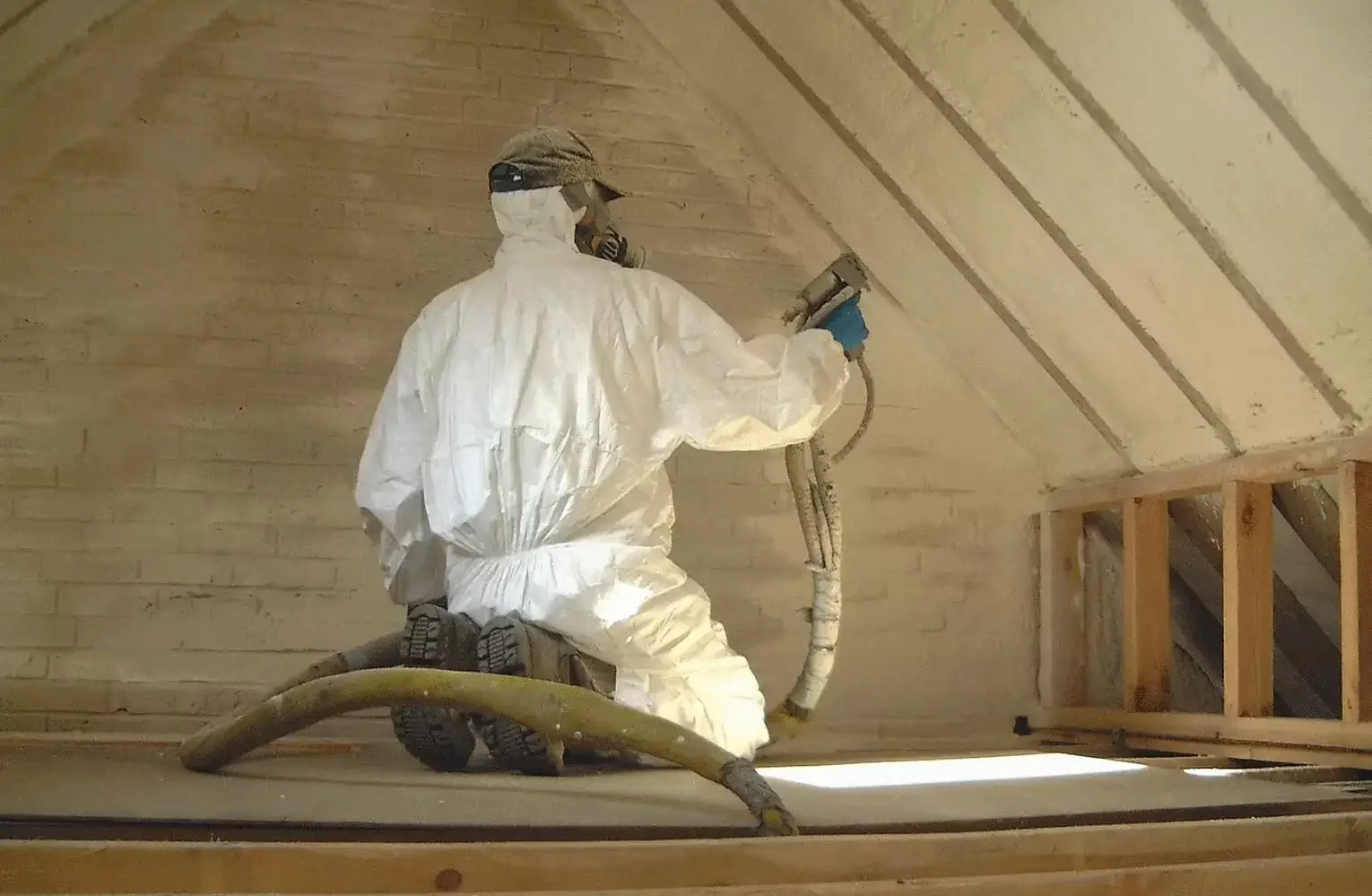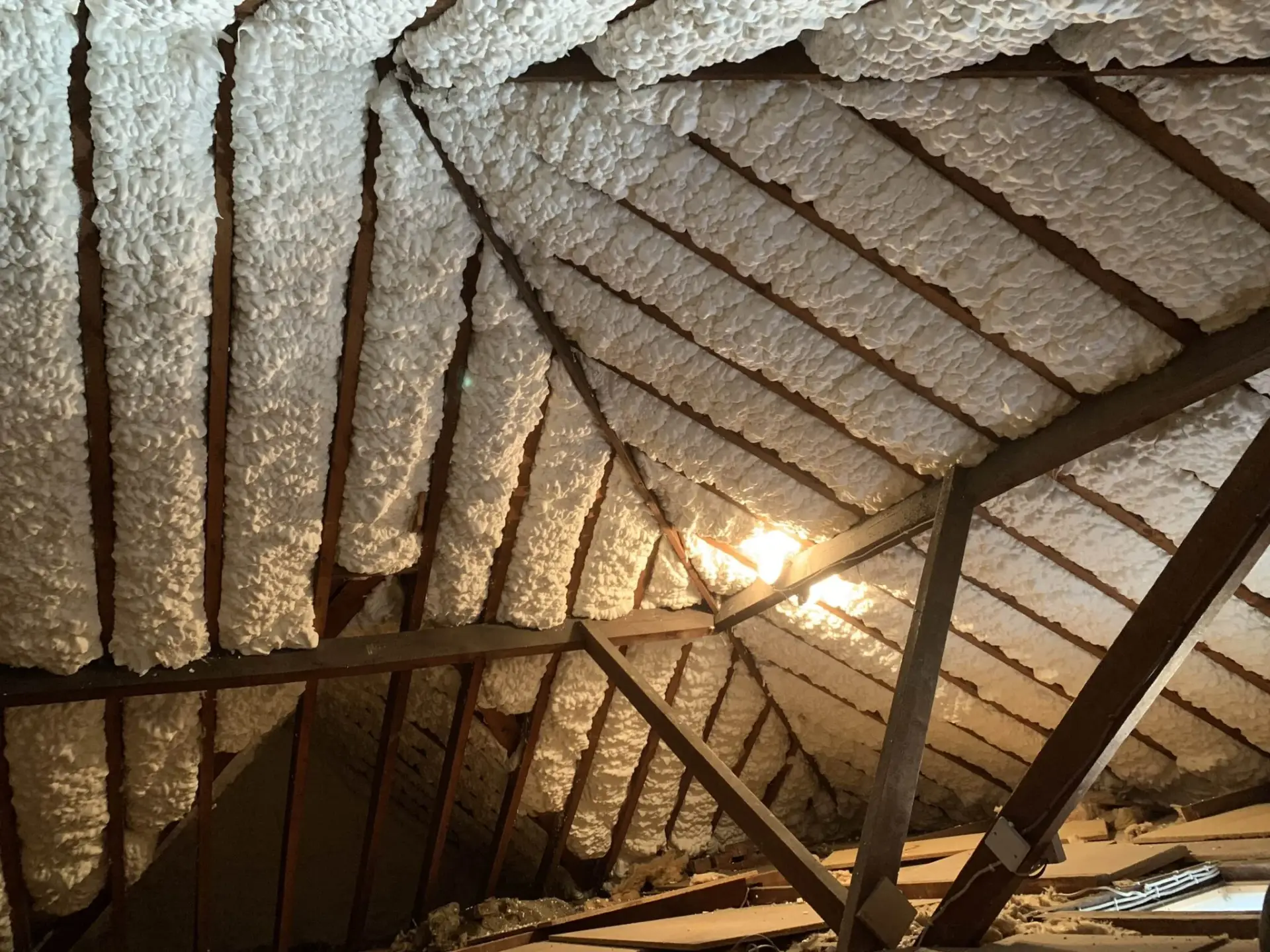How to Sell a House with Spray Foam Insulation: A Complete Guide for UK Homeowners

Author
Published on
Category
Recent Posts
Get in Touch
Spray foam insulation is an effective way to boost your home’s energy efficiency, but it can present challenges when it comes to selling your property. If you’ve installed spray foam insulation and are now encountering difficulties with potential buyers or mortgage lenders, this guide will walk you through what you need to know to successfully sell a home with spray foam insulation in the UK.

Q: Why is spray foam insulation causing problems when selling homes in the UK?
A: The primary issue with selling a house that has spray foam insulation comes from concerns raised by mortgage lenders and surveyors. Improperly installed spray foam insulation can cause trapped moisture, leading to timber rot and structural damage. This issue is particularly problematic when the foam is applied in roof spaces, as it can block access for surveyors to properly inspect the roof timbers. As a result, some lenders are reluctant to approve mortgages for homes with spray foam insulation, making it harder for homeowners to sell their properties.
Q: Why do mortgage lenders not like spray foam insulation?
A: Mortgage lenders are often cautious about homes with spray foam insulation due to the risks of moisture damage and structural concerns. Spray foam can create an airtight seal, which, if applied incorrectly, traps moisture inside. Over time, this can lead to timber rot, particularly in the roof. Additionally, surveyors may have difficulty inspecting the roof’s condition if the spray foam covers important areas. This lack of visibility makes lenders reluctant to offer mortgages on properties with spray foam insulation, especially in older homes where the risk of damage may be higher.
Q: Does spray foam insulation devalue your house?
A: Yes, spray foam insulation can reduce the value of your property. Homes with spray foam often face resistance from both buyers and mortgage lenders, as the insulation raises concerns about structural integrity and future repair costs. Surveyors may flag these properties as high-risk, which can result in lower offers from buyers or discourage potential buyers altogether. The difficulty in securing a mortgage for homes with spray foam insulation can also limit the pool of interested buyers, potentially reducing the market value of your home.
Q: Can spray foam void a mortgage or remortgage application?
A: Spray foam insulation does not automatically void a mortgage, but it can complicate the process. Many lenders in the UK are unwilling to approve mortgages for homes with spray foam insulation, particularly in the roof, due to the risk of hidden structural issues. This can make it challenging for potential buyers to secure financing, or for current homeowners to remortgage their property if they’ve had spray foam insulation installed.
Q: What can homeowners do if they have spray foam insulation and want to sell their house?
A: If you’re facing difficulties selling a home with spray foam insulation, there are several steps you can take to address the concerns of buyers and lenders:
Get an independent survey: Hire a surveyor experienced in dealing with spray foam insulation to assess the property. A positive survey report that confirms there are no moisture problems or structural issues can help reassure potential buyers and mortgage lenders.
Provide proof of professional installation: If your spray foam insulation was installed by a certified company, provide the relevant documentation, such as a British Board of Agrément (BBA) certificate. This can demonstrate that the insulation was applied according to industry standards, which can alleviate some concerns.
Consider removal: If the insulation is creating significant obstacles to selling your house, you may want to consider removing it. Although this can be a costly option, it may make the property more marketable and appealing to buyers and mortgage lenders.
Work with specialist lenders: Some lenders are more flexible when it comes to financing homes with spray foam insulation, especially if an independent survey has been conducted and there are no major issues. Consult a mortgage broker to help you find a lender who is willing to work with properties that have spray foam insulation.
Q: Can expanding foam cause damp or structural damage?
A: Yes, expanding foam, including spray foam insulation, can cause damp and structural damage if not installed properly. The foam creates an airtight seal that can trap moisture, particularly in areas like the roof. Without adequate ventilation, this trapped moisture can lead to timber rot, mould, and dampness, which may compromise the structural integrity of your home over time.
Q: Should I remove spray foam insulation if I’m planning to sell my home?
A: Removing spray foam insulation isn’t always necessary, but it can be considered if the insulation is causing significant issues with buyers or mortgage lenders. Before opting for removal, you should:
- Obtain an independent survey to demonstrate that your home is free from moisture damage.
- Provide documentation showing that the spray foam was installed by a certified professional.
If the foam continues to deter buyers or block mortgage approval, removal might be a practical solution to make the sale process smoother.
Q: Where should spray foam insulation not be used?
A: Spray foam insulation should not be used in areas where ventilation is necessary, such as timber-framed roofs or spaces prone to condensation. Applying spray foam directly to roof timbers can trap moisture and lead to timber rot over time. Similarly, avoid using spray foam in areas where future access for inspection or repairs is required, as the foam can make these areas difficult to reach.
Q: What are the alternatives to spray foam insulation?
A: Alternatives to spray foam insulation that are often preferred by both surveyors and mortgage lenders include:
- Fiberglass insulation
- Mineral wool
- Cellulose insulation
These materials are effective for insulation and tend to be more breathable, reducing the risk of trapped moisture and structural damage. They also offer easier access for future inspections and repairs, which can be a major benefit when selling your property.
Selling a house with spray foam insulation can be challenging, but it’s not impossible. By taking the right steps—such as getting an independent survey, providing documentation of professional installation, or considering insulation removal—you can address the concerns of buyers and mortgage lenders. If you’re struggling with spray foam insulation issues and need expert guidance, reach out to Hauseit for professional support and advice.


